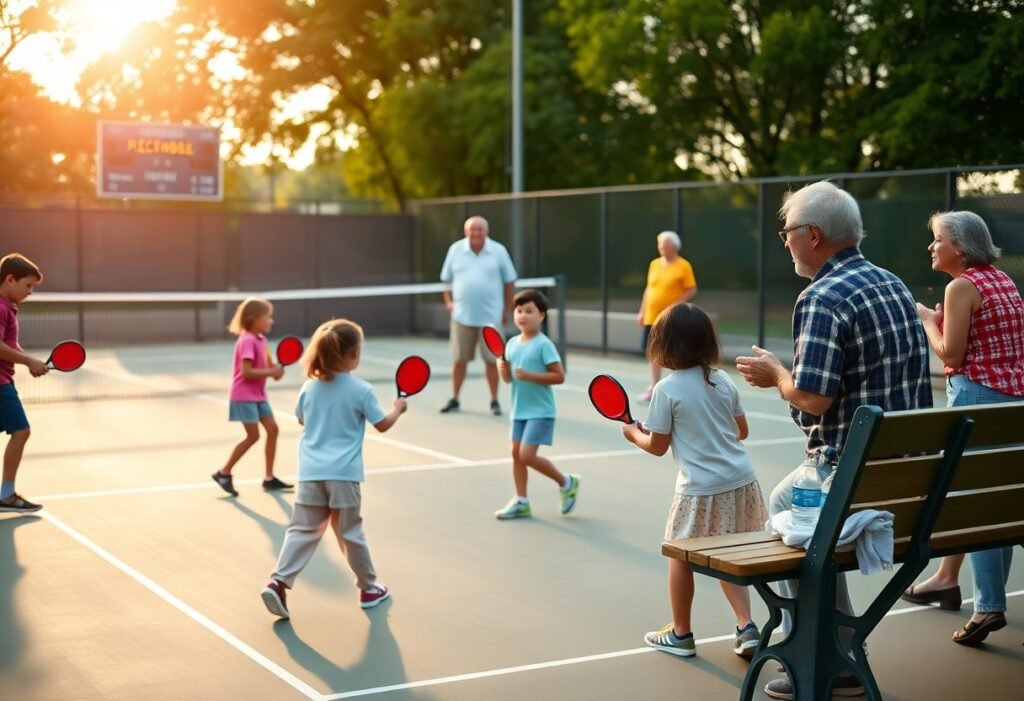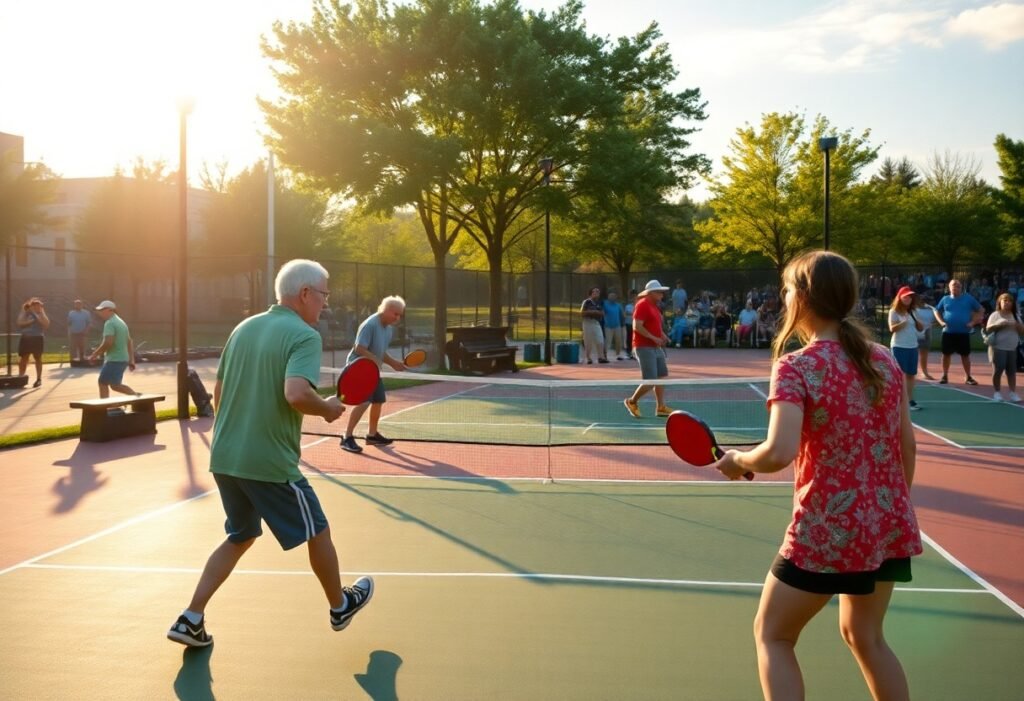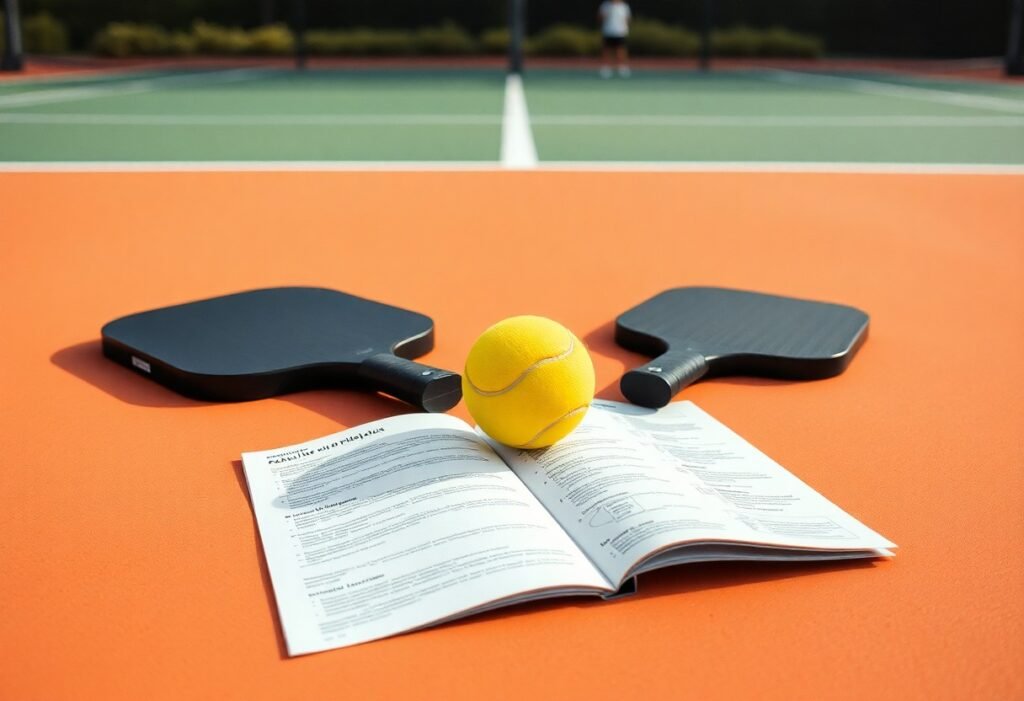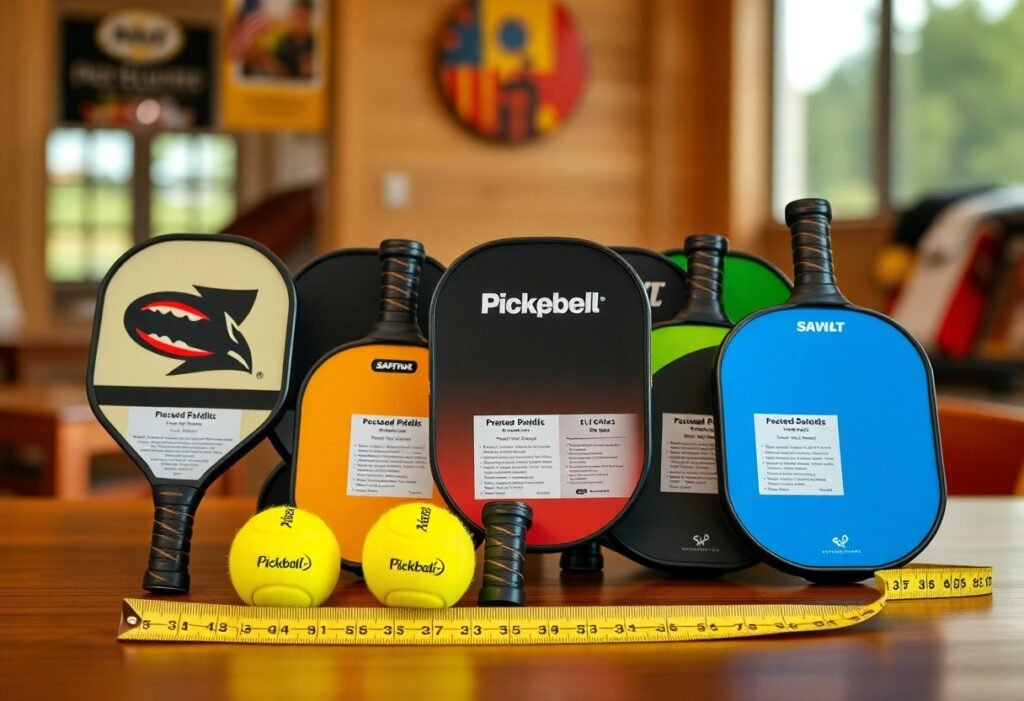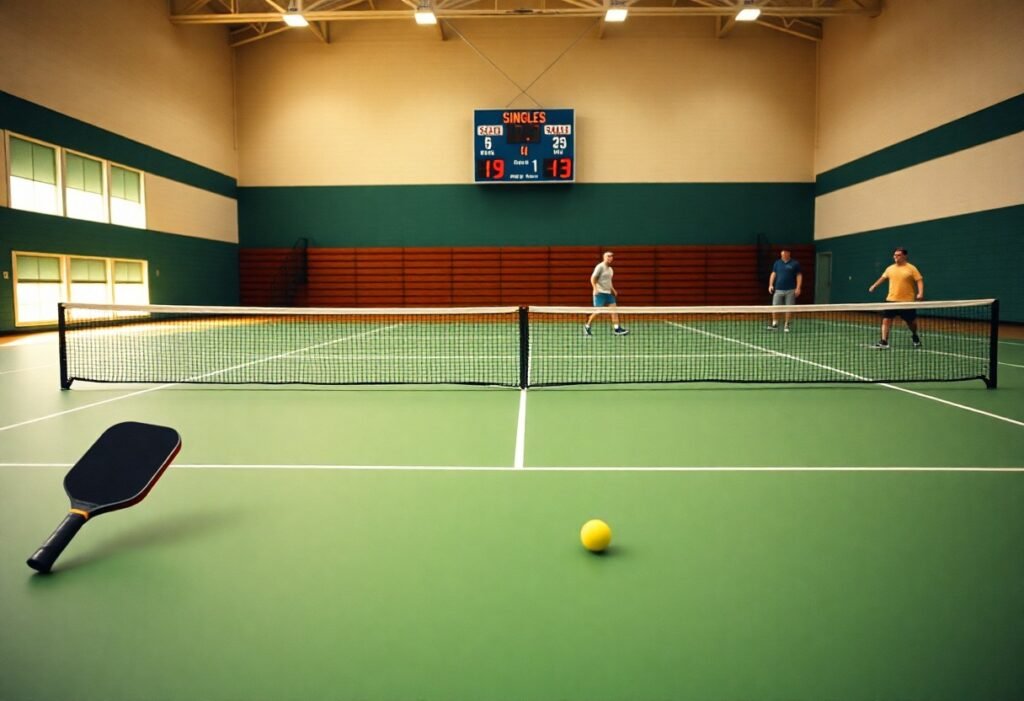Kids thrive on active engagement and social interaction, and pickleball offers a fantastic way to keep them both entertained and active. By incorporating fun challenges and age-appropriate rules, you can ensure that your family enjoys every match together. This guide will provide you with creative tips to enhance teamwork and camaraderie while ensuring safety on the court, making it an enjoyable sport for all ages.
Understanding Pickleball
What is Pickleball?
Pickleball is a paddle sport combining elements of tennis, badminton, and table tennis, played on a court with a net. You use a lightweight paddle to hit a plastic ball with holes, engaging in either singles or doubles play. The game is simple to pick up, making it ideal for players of all ages and skill levels.
History and Origins of the Game
Pickleball was created in 1965 on Bainbridge Island, Washington, as a way to entertain children during summer vacation. Its inventors, Joel Pritchard, Bill Bell, and Barney McCallum, adapted existing sports to suit all ages.
The game’s ingenuity lies in its accessibility. Initially, Pritchard set out to recreate a game that could be enjoyed by his children and their friends. Using bits from other racquet sports, such as reduced court size and the use of wiffle balls, the trio crafted a game everyone could play. The name “pickleball” derives either from the Pritchard family’s dog, Pickles, who would chase the ball, or from the term “pickle boat,” referring to the last team to join a race. This simple, fun design laid the foundation for its growth in popularity across the United States and beyond.
Benefits of Pickleball for Kids and Families
Playing pickleball offers numerous benefits for kids and families, including enhanced physical fitness, improved coordination, and meaningful social interactions. The sport promotes teamwork and communication, making it a perfect family activity.
The incorporation of pickleball into family routines can foster not only healthy habits but also bonding experiences. Studies show that engaging in such physical activities can reduce stress and improve overall mood, especially in children. Additionally, the low-impact nature of the game allows players to develop imperative motor skills and strategic thinking without risking injury. As you play together, you strengthen family ties while promoting an active lifestyle for all ages.
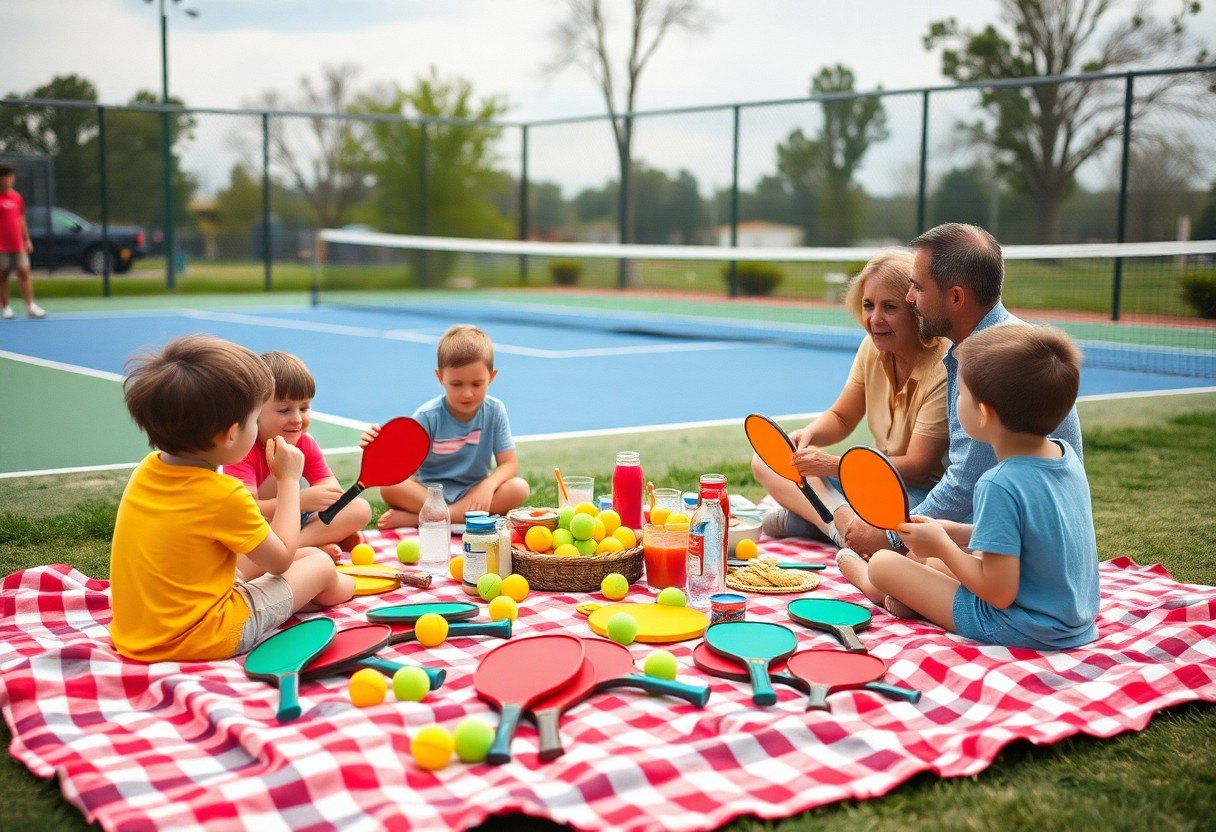
How to Get Started with Pickleball
Choosing the Right Equipment
To enjoy pickleball, start with the right equipment, which includes a paddle and a ball. Pickleball paddles come in various materials, weights, and sizes; lighter paddles are easier for kids to handle, while adults may prefer more control with heavier options. Ensure the balls you choose are specifically designed for outdoor or indoor play, as they differ in construction and bounce. You can find beginner-friendly sets that include paddles and balls, making it convenient to get started.
Finding Local Courts and Facilities
Finding a place to play pickleball is imperative for your family’s enjoyment. Local community centers, gyms, parks, and schools often have dedicated courts or facilities that welcome players of all ages. Check online resources or visit recreational websites to discover nearby locations that offer pickleball times and events.
Consider visiting local parks or recreation departments, which frequently organize pickleball clinics and open play sessions. Joining community groups on social media can also lead you to check if courts near you have reserved times for families. Many towns now feature multi-sport courts designed specifically for pickleball, ensuring you have ample space to enjoy the game. Don’t hesitate to contact facilities for information about availability, fees, and equipment rentals.
Basic Rules and Scoring
Understanding the basic rules and scoring of pickleball helps make the game enjoyable for everyone. Matches can be played either as singles or doubles, with points scored only by the serving team. The game is typically played to 11 points, requiring a win by at least two points. Players must serve underhand, and the ball must bounce once on each side before volleys are allowed.
Familiarize yourself with the non-volley zone, also known as the “kitchen,” as players cannot volley while standing in this area. The simplicity of the rules coupled with the fun pacing makes pickleball accessible for kids and families. Engaging in practice matches can help reinforce these rules while fostering skills and teamwork among players of different ages.
Tips for Teaching Kids the Game
- Start with the Basics: Introduce fundamental skills such as grip, stance, and swing.
- Keep It Fun: Incorporate games and challenges to maintain interest.
- Offer Encouragement: Positively reinforce efforts, regardless of skill level.
- Be Patient: Give kids time to improve without pressure.
- Involve the Family: Create a sense of teamwork by having family matches.
Keeping It Simple
Focus on teaching the imperative elements of pickleball, such as the basic rules, how to serve, and the layout of the court. Avoid overwhelming children with too much information at once; instead, provide them with manageable pieces of knowledge that they can quickly grasp. Simplicity helps maintain their engagement and builds confidence as they master each component.
Fun Drills and Activities
Incorporate a variety of engaging drills for kids to practice their skills. Consider simple activities like “king of the court” where players compete to win points, or relay races that involve running to retrieve the ball. You can also create obstacle courses to enhance movement and coordination. For more ideas, check out these Fun Family Pickleball Drills for All Ages.
Engaging drills can spark enthusiasm while developing critical pickleball skills. Set up activities like target hitting, where players aim at marked spots on the court, or partner drills for improved coordination. These fun variations encourage kids to practice and reinforce their skills through enjoyable competition, making the learning process less about pressure and more about playful engagement.
Emphasizing Teamwork and Sportsmanship
Instilling a sense of teamwork and sportsmanship is imperative when teaching kids pickleball. Encourage them to cheer for each other, share strategies, and celebrate successes collectively. This approach fosters camaraderie and a positive environment that helps nurture friendships while playing.
Promoting sportsmanship can involve discussing the importance of respecting opponents, shaking hands post-game, and recognizing good plays from both teams. By prioritizing teamwork, you help children understand the value of collaboration and fair play in sports, which uplifts their overall experience and builds lifelong values. Any positive habits they develop during pickleball will influence how they approach teamwork in other areas of their lives.

Factors That Enhance Family Game Day
- Creating a Fun Atmosphere
- Setting Up Family Tournaments
- Incorporating Snacks and Breaks
Creating a Fun Atmosphere
To ensure an enjoyable experience, focus on creating a vibrant atmosphere. Use colorful decorations, upbeat music, and enthusiastic cheers to boost energy levels. A friendly, supportive environment encourages everyone, regardless of skill level, to participate and enjoy the game together. The more inviting the space, the more likely family members will engage wholeheartedly. Thou shalt witness laughter and bonding flourish.
Setting Up Family Tournaments
Establishing family tournaments can be a fantastic way to spice up your pickleball day. Design brackets that include everyone, ensuring fair matchups based on skill and age. This fosters friendly competition, allowing families to cheer each other on while learning from one another. Incorporating prizes or trophies, even humorous ones, heightens motivation and excitement among participants. Thou shall create memories that resonate long after the games end.
Make sure to clearly outline the tournament rules and structure ahead of time, so every participant knows what to expect. Encourage teams to choose creative names and even dress up in matching outfits to boost team spirit. Keep track of scores, promote healthy competition, and engage everyone by rotating partners for an inclusive experience. This not only ensures participation but also diversifies gameplay, making each match unique and exciting.
Incorporating Snacks and Breaks
Snacks and breaks are important to maintain energy and morale during family game days. Prepare a variety of healthy options like fruits, nuts, and veggie platters, alongside indulgent treats to cater to all palates. Scheduled breaks provide ample time for everyone to refuel and socialize, enhancing bonds while enjoying a casual atmosphere. Thou shall foster a sense of togetherness during crucial downtime.
Consider setting up a designated snack station with easy access for players during breaks. This encourages connectivity as families gather around to share their favorite foods and recharge. Use snack time as an opportunity to discuss strategies or share fun stories from previous games. The combination of proper nutrition and communal enjoyment amplifies the overall experience, making every game day memorable.

How to Make It Enjoyable for All Ages
Modifying Rules for Younger Players
To ensure younger players stay engaged, consider simplifying the rules. For instance, allow them to serve from anywhere behind the baseline or reduce the point total needed to win a game. You might also use larger paddles and balls to enhance their ability to hit and connect, fostering confidence and enjoyment during gameplay.
Introducing Challenges for Older Kids and Adults
As children grow, you can amp up the competition by introducing customized challenges. Consider organizing matches that require specific skills, such as only using backhands or playing with a limit on serves. This not only maintains their interest but also cultivates advanced techniques that can improve overall gameplay.
Setting challenges can take many forms, such as timed games or setting specific targets the players need to hit throughout a match. These can range from scoring a certain number of points within a time limit to including trick shots or requiring teamwork elements, which can make the experience lively and encourage strategic thinking.
Encouraging Family Play and Bonding
Engaging in pickleball as a family fosters connection and strengthens relationships. During matches, emphasize teamwork by pairing family members with different skill levels to encourage cooperation and communication. Celebrate small victories together, and host friendly competitions that promote a spirit of unity rather than cutthroat rivalry.
Family game days can also encourage other bonding activities, such as preparing snacks together afterward or discussing strategies during breaks. This shared experience not only makes pickleball enjoyable but also creates lasting memories, emphasizing the importance of family time in a fun and engaging setting.
Building a Pickleball Community
Joining Local Leagues
Participating in local leagues is a fantastic way for your family to engage in pickleball while meeting fellow enthusiasts. Look for programs that offer divisions for various skill levels and age groups, ensuring everyone can play comfortably. Many communities hold seasonal tournaments that invite families, making it easy for you to form lasting relationships with other players.
Organizing Family Events and Clinics
Creating family pickleball events and clinics can significantly enhance the gaming experience. Consider hosting monthly family nights where everyone plays together, with friendly matches and skill-building clinics led by knowledgeable instructors. These gatherings promote teamwork and encourage both parents and kids to improve their skills while having fun.
When organizing these events, aim for a mix of competitive play and skill development. For example, incorporate mini-tournaments where families team up, fostering camaraderie and friendly rivalry. Additionally, invite local pickleball coaches to run clinics that teach strategies, teamwork, and sportsmanship, ensuring everyone leaves feeling more confident and connected.
Connecting with Other Families
Building relationships with other families enriches your pickleball experience. Forming connections fosters a supportive environment where you can share tips, organize playdates, and motivate each other to improve. Engaging with local pickleball groups or social media forums can help you find nearby families interested in joining in on the fun.
Creating a family network centered around pickleball opens avenues for shared experiences. You might start a group chat or an email list to coordinate regular play sessions, organize friendly competitions, or simply share your favorite pickleball resources. This sense of community not only enhances your family’s enjoyment but also builds lasting friendships beyond the court.
Final Words
On the whole, incorporating pickleball into your family’s activities can create a unique bonding experience for all ages. By emphasizing teamwork, setting up friendly competitions, and adapting rules for skill levels, you can ensure that everyone enjoys the game. Consider organizing regular pickleball sessions or tournaments, inviting friends and neighbors to join, and incorporating fun themes or prizes. With a vibrant atmosphere and the right approach, you can make pickleball a delightful, engaging sport that brings your family together while promoting physical activity.


